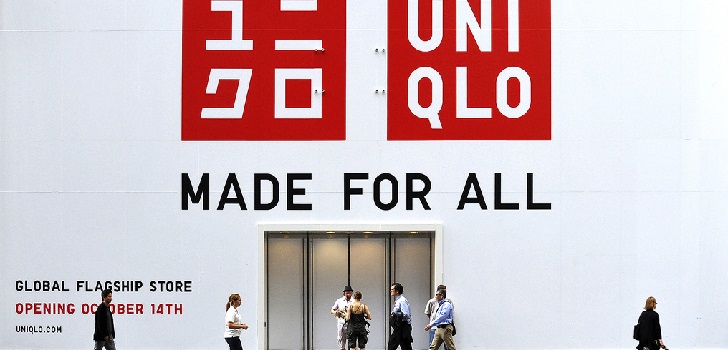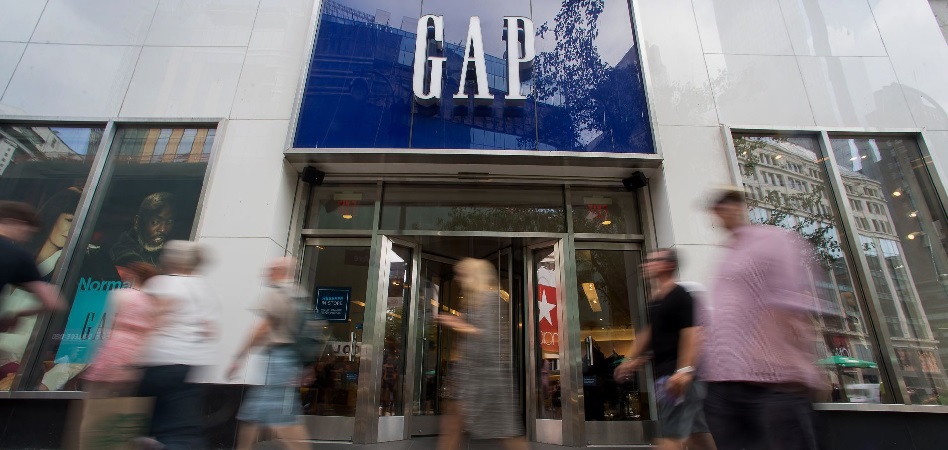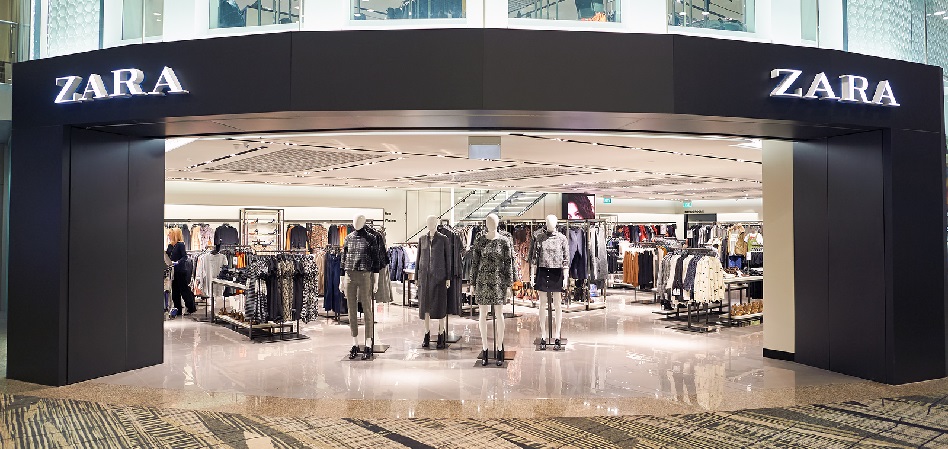2018, the year Japanese force replaced American power in the fashion podium
The giants of the sector have reconsidered their models this last year due to an environment of transformation characterised by the fall of profitability and the deceleration of fashion consumption.

Last year has been a turning point for fashion distribution behemoths. Large groups are facing a background of transformation due to the deceleration of fashion consumption on an international scale as well as to the intern crisis that the sector is undergoing because of digitalisation. That last process, moreover, is something that is turning to be quite hard to implant by some companies. No one is spared from the speed in which the business is evolving, not even the almighty: Inditex. The profitability of titans has been affected by a context of constant promotions and transformation, which demand more and more investment. The race is becoming longer, and the finish line is standing further away. Some companies are being left behind, and for the first time in two years, there have been changes in the fashion podium.
Although Fast Retailing already surpassed Gap in 2015 thanks to exchange rates, in 2018, after two fiscal years of give-and-take games with currencies, the Japanese group has settled definitively in the third position. Consequently, after going through several restructuring years, Gap has managed to see the light at the end of the tunnel. All things considered Gap stands as the fourth biggest fashion distribution group in base to volume of business.
For the first time after its restructuring, Gap ended the fiscal year with sales and profit on a rise. Specifically, the company’s revenue stood at 3.78 billion dollars (3.22 billion euros) between February and April, up by 9.9%. Its net profit, on the other hand, raised by 14.68% standing at 164 million dollars (139.9 million euros). Afterwards, at the end of the first quarter, Gap took another step forward with a rise of 11.3% in profit and a growth of 8.6%, reaching 7.86 billion dollars (6.8 billion euros). At the end of the first nine months of fiscal 2018, the company kept on reaping the fruits of its plans engrossing its result up by 13% and its volume of business by 7.9%.
Gap, which a decade ago was the first retailer worldwide in base to volume of business, has definitively been replaced by Fast Retailing, Uniqlo’s parent company
The former leader of fashion distribution explained that its goal was to position the company in a spot where it could continue to grow in the long term. Besides restructuring plans, the giant from the United States also capitalised on Trump’s fiscal reform, a reform that has affected all companies around the country. In fact, it is the only group in the podium that has managed to recover its margin. Gap’s restructuring in recent years has basically consisted on adjusting its sales network and aiming for the online channel.
During this process, the company started an emergency plan aimed at saving 500 million dollars in three years through the closure of 200 stores. Furthermore, the company closed Weddington Way, the specialised start-up in brides and maids of honour which it acquired in December 2016. Parallelly, the company has recently released a new brand for the first time in ten years: Hill City. Gap’s objective with this new ensign is to address men’s athleisure and to stand among the premium segment. The new brand is basically the male version of Athleta’s line, the firm Gap acquired in 2008 to conquer the sports segment through women’s fashion.
But the Japanese force has undoubtedly replaced the American one during 2018 and has taken a run up to stand in a definite way in the third position of the world’s fashion podium. In 2015, Fast Retailing, Uniqlo’s parent company, already surpassed Gap due to the impact of exchange rates. The Japanese leviathan showed its worth at the third position during fiscal 2016 and 2017, and in 2018, it fully settled around the bronze.
During the first quarter of 2018, the giant maintained its impulse and ended with a net profit of 78.5 billion yens (587.4 million euros), up by 12.7%. The company raised its sales 16.7% reaching 617 billion yens (4.61 billion euros). The group continued at the same rate for the first half year with a growth of 7.1%. At the end of fiscal 2018, the group maintained its strength and ended the period with a growth of 14.4% and a rise of profit of 29.8%. And that’s how they obtained the bronze medal.
However, despite improving the figures of recent years, Fast Retailing has moved aside some of the important objectives it had set for itself. Tadashi Yanai, founder of the group, said some years ago that by 2020 the group would become the first retailer in the world. Now, having the plan’s expiration date closer by the day, the executive has decided to put that goal on hold. Now his plans contemplate an expansion of their presence and settling around Europe consistently. During the last few months, the group has really speed up its entry on new European markets.
Uniqlo has already announced that for next year it will be present in two new regions of Europe: Italy and Denmark. In the continent, the European giant has half a hundred stores. Most of the stores network of Fast Retailing around the region are located in France, with 26 stores. In the United Kingdom, the company has a total of eleven points of sale.

Germany is also a region where the Japanese company has a certain relevance, with nine stores in the country in total. As per the rest of Europe, the group operates with two stores in Spain, in Belgium, and three points of sales in Sweden and Russia. With this goal under the spotlight, the Japanese group directed most of its 2018 investment into Uniqlo’s international expansion, valued in 26.3 billion yens (202.4 million euros). Furthermore, for the first time in the group’s history, Uniqlo’s international sales surpassed national ones.
The silver medal is still carried by H&M, although the Swedish giant keeps on lurching around its position. Although it is quite far away from Fast Retailing, H&M is undergoing a restructuring process which is started in 2017. That year, all these changes came out of a sudden for the company, 2018 has been the year for trials and errors. At the beginning of the year, the group released Nyden, a completely online firm targeted towards a millennial audience.
Notwithstanding, last October, three months after its release, H&M took a step back and absorbed the ensign. But that wasn’t the company’s only closure during the last fiscal year. Cheap Monday, the group’s young fashion firm, has also been closed down. The company justified such action to the transformation of the fashion industry as a result of digitalisation as well as to the negative development of Cheap Monday during recent years.
Analysts have qualified H&M’s digitalisation process as something painful
And that’s the weakness of H&M: digitalisation. In fact, analysts like the Nordic bank Handlesbanken have qualified the process as something painful for the company. At the beginning of the year, the group’s CEO Karl-Johann Persson explained in the last conference to analysts that the sector today is more complex and difficult due to the advance of players like Amazon and Alibaba, the apparition of new models of disruptive businesses and the fact that the purchasing behaviour of consumers keep on changing.
In 2017, H&M registered results considered as disappointing by the company, with a rise of sales of 3% (4% at constant exchange rates), reaching 199.96 billion Swedish kronor (20.11 billion euros) and a drop of net profit of 13% in base to 2016. After H&M ended fiscal 2017 with a result that its own founder qualified as disappointing, 2018 started all the same. During the first quarter of the fiscal year, the company continued going downwards with a drop of 1.7% of sales and a downturn of its net profit of 44%.
However, the Swedish company bounced back the second quarter stopping the decrease of sales after growing 1.17% between March and May. And during the first nine months, the company continued to develop its volume of business in a positive manner, with a growth of 2.9%, but dropped its net profit by 25.3% due to the extraordinary expenses of new logistics systems.
On the brink of ending fiscal 2018, H&M saved the period with a growth of 5%, reaching 210 billion Swedish kronor (20.52 billion euros), in line with the expected by analysts. The current goal of the Swedish company is set on focusing its sight on consumers and implanting all the required digital strategies, such as purchasing experience or technology in stores.
And the podium’s gold is still property of Inditex, although not even the leader escapes a restructuration of the business. The group started the fiscal year weak, growing only 1.53% in base to the same period last year, whereas net profit raised also 2.14% only, reaching 668 million euros. In that period, Inditex registered its lowest growth in two decades.
The group blamed these results on weather conditions and an early Easter. However, the group had an ace up its sleeve: the margin, although it decreased in recent quarters, grew again by 58.9%. During the first quarter of 2018, the Spanish company regained its rate and grew up by 3%, reaching 12 billion euros, whereas the net profit, on the other hand, was raised in the same proportion, a 3%, standing at 1.4 billion euros.

Lastly, during the first nine months, Inditex ended with a rise of 4% in its net profit, at the same time as it managed to correct the evolution of its gross margin after avoiding “to participate in the promotional activity widely seen in the sector after September”. That’s the strategy that the group has decided to follow during the last fiscal year, avoiding discounts and promotions to improve the margins.
But 2018 will be remembered as a turning point for Inditex after last September it announced its objective for 2020: becoming a pure player. This has been one of the most disruptive proposals of the distribution leader in order to survive in a new environment of fashion.


info@themds.com
Validation policy for comments:
MDS does not perform prior verification for the publication of comments. However, to prevent anonymous comments from affecting the rights of third parties without the ability to reply, all comments require a valid email address, which won’t be visible or shared.
Enter your name and email address to be able to comment on this news: once you click on the link you will find within your verification email, your comment will be published.